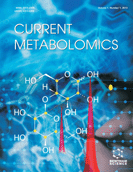Abstract
Background: The intensity of the blood as well as tissue autofluorescence (fluorescence of endogenous fluorophores) shows current structure of protein mixture, its current conformation (native or denatured state), concentration or activity depending on the external and internal conditions. Nicotine amide adenine dinucleotide (NAD+) is a cofactor in redox reactions of glycolysis and the citric acid cycle in eukaryotic cells and it can be a marker of the intensity of mitochondria metabolism as well as the presence of oxygen in the cells. The concentration of reduced nicotinamide adenine dinucleotide (NADH) varies during normoxia, hypoxia and hyperoxia cells. Cancer cells increase the concentration of NADH during hypoxia and anoxia. The reason of NADH cumulation is microenvironment with low or no oxygen supply which induces glycolysis as a preferential source of energy. Glycolysis is faster, does not need oxygen but is less effective than oxidative phosphorylation.
Focus: The aim of this work was to measure the structure of blood plasma and mammary gland homogenates of patients at three stages of breast cancer in comparison to healthy subjects using fluorescence analysis and atomic force microscopy. The blood plasma of patients with breast cancer had a different structure of proteins in comparison to healthy subjects. The blood plasma and homogenate of patients with breast cancer showed significant increase in autofluorescence intensity, which represents mixture of various endogenous fluorophores in particular porphyrins, collagen, NAD and flavins.
Prospect: The information about complex summary of fluorescence intensity of all mixtures of endogenous fluorophores may in the future serve as rapid preliminary markers of cancer. The fluorescence analysis might be a non-traditional methodology for an early rapid diagnosis of breast cancer in the next clinical practice.
Keywords: Nicotine amide adenine dinucleotide, breast cancer proteins, autofluorescence, blood plasma, breast cancer homogenate, fluorophores.
 47
47 2
2


















